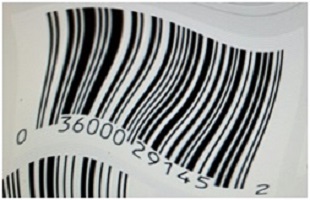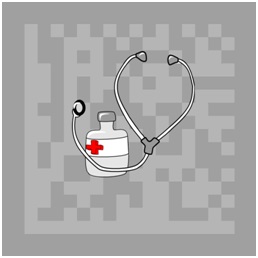Are You Getting Ready For UDI or DQSA?
(FDA Universal Data Identifier and Drug Quality Security Act)
These programs are going to be a great help in meeting healthcare industry challenges and for patient safety. It represents the start of a significant step up in the broad use of information technology in healthcare. The data will be primarily created from AIDC transactions as products are moved from manufacturing through distribution and on to the consumers. The data are expected to be very accurate and timely and yet inexpensive. In fact the data needs to be all that for success. That is why global barcode standards with expected quality levels are specified. To work in these markets you will need to comply with the standard. Unlike many other industry segments, healthcare companies will have to actively comply to stay out of trouble in the market and keep their reputation and clients.
As an AIDC specialist with experience in optimizing barcode based supply chains, I can share with you that you have a real job to do lying ahead.
These breakthrough programs are important, complex and, of course, mandatory. You have to prepare to do it if you want to be allowed to stay in business at all and you need to do it right over the long term to maintain credibility in the market and to stay in business as well. So if you haven’t already, read the documentation available, get the team together and lay out the steps you must take to achieve compliance and then maintain compliance.
Here are a few ways we can help.
This paper is intended to fill an often overlooked void in the planning, preparation and execution of UDI compliance. The fact that it is overlooked is understandable. The healthcare industry generally and the medical device community in particular do not have the experience necessary to pick up on this nuance. In summary, you are working to comply with FDA regulations that use GS1 or HIBCC barcode standards. Both of these standards call for barcode print quality to meet or exceed ANSI Grade C. This specified level of quality will result in all or most scanners around the world being able to accurately and readily decode the data in the barcode. This is a critical aspect of the regulations; the barcodes have to be correct and scanned accurately and efficiently for the system to work. You can expect that if you do not get it right someone will find out. Fortunately, the barcode print quality test methods are non-destructive and predictive. Barcode verification is a great tool to help you do it right.
So then, how does this barcode content and quality aspect interact with your planning? Actually, they come together in several important ways from beginning onward past the planning, through execution and into the ongoing maintenance of your compliance program. Let’s look at a few phases.
Discovery – Where are we now and what work has to be done? – The Initial Audit
Here is a rhetorical question – “Do you know specifically, by product, where you stand? What data is now on the package, what needs to be on the package, what the current barcode contains, what it will have to contain, the average ANSI print quality grade of the package/label printer, whether it can handle serialization or if it has to, etc. ?”
The answer usually is “Not exactly”. Many companies are made up of multiple businesses, in multiple locations, with many different products that may have been in active distribution for many years. In addition, each product may be marketed into several different countries and each country may have their own regulatory and language requirements. There may not be a core data repository of all this product information up to date and conveniently available to answer this question. That is what you will need to start. This may be a significant task!
If you would like to see one approach to this data collection, check this out.
Choosing the right type of barcode
After finding out what data has to be in the barcode you will be better able to determine what barcode symbology to use. There are 2 types available, linear barcode and 2D barcode. The linear code is called Code 128 and the 2D code is called Datamatrix. Typical product marking examples may look like this:
Linear
Or 2D
Both examples contain the same amount of information. You can see that it took 2 linear barcodes to encode the same amount shown in the one 2D barcode. The 2D code takes up less space on the package, is safer (more redundant) than the linear and is easier to scan (any angle). In distribution, the linear codes require 2 scans by the operator and intelligent software to group and record the data correctly. The direction is definitely toward using 2D barcodes. Although 2D offers significant advantage over linear, both are available for use. Many in the barcode community believe that 2D will eventually be the defacto standard and suggest that while doing all the work for UDI might be a good time to make the switch.
The multi-field barcodes used in UDI can be tricky to master. There may be several fields in one barcode. These fields are encoded and decoded following rules in the standards and often involve using ‘unprintable’ characters that can make the task both difficult and hazardous. To see one tool used to help check this out. This GS1 Application Compliance Analysis is a tool to insure that the data in the barcode is formatted correctly and can be processed when scanned. It is complex and cannot be done readily and reliably by a person without the tools. An error here is as bad as a barcode that can’t be scanned! It is definitely something you will want to integrate into your testing.
What new equipment and processes are required?
The terms ‘variable data printing’ and ‘on demand’ printing may be new to some reading this. Essentially, it means that your printing process can readily change the printed data as you change from one lot to the next, one serial # to the next, etc. Digital printing equipment such as thermal transfer printing is one technology capable of doing this however wet ink processes using plates usually are not. If you need to purchase new equipment then some pre-purchase questions should be asked. They include:
The obvious things like speed, size of print, barcodes on board or loaded, dependability, consistency of print quality, ease of maintenance, rugged or susceptible to damage, support, initial cost, cost of supplies, etc.
Not so obvious questions would include – can you clear all previous data by command, can it produce your label design with ANSI print quality of Grade C or better consistently, can it do that with linear and 2D, if you are going to use linear code are you going to print ‘ladder’ style (not recommended due to variable quality) or ‘picket fence’, is the mark able to withstand the abrasion, exposure and time while passing through distribution, does the system require proprietary software?, if it does require proprietary software then what is your backup plan just in case,
You will need to print a prototype label configured for your products with all fields positioned and sized both in character size and field length. You may need a few different prototypes if your product labeling is varied. A few caveats: If you use a digital printing system and try to verify the barcode quality of the image rather than the finished printed packaging you will not have a true indication of what your customers and inspectors see. You should only verify finished packaging. Don’t forget that there is an area around the barcode that cannot be used for print. It is a reserved area called the ‘quiet zone’. Its size varies with code types.
Look for a future paper on ‘100% Inspection vs. SPC and Process Controls’
More prototypes and a final audit
At this point you should have seen enough samples from the various printing systems to have narrowed the choices down to just one or two and can make some final decisions.
While you are picking hardware and testing to insure it can handle both required content and quality, someone should be getting the sources for the required label data and laying out the process of getting the data into the printer command language with a user interface or, if applicable, into the label generation program. A second data project involves getting the fields of data required for the GUDID database. This is not the same data used to print a products labels but does relate to that specific product.
Now it is time to produce a final (hopefully) prototype label for each product. Test these fully for quality and content and circulate them to the members of the UDI team for comment and approval. Again, here is an example of how this could be done.
Ready for submission
At the risk of making it sound much easier than it probably is, now just submit it (After checking everything again of course). Lets assume that your submission is accepted. You have your license to go to market and now the market knows what to expect from you. Showtime, it’s now time for you to deliver.
Ready for implementation
During the development of your plan you will have discovered rules to follow, the process steps and their order, security and permission issues, test procedures, etc. essentially everything you need to safely get started. It is the first cut of the manual for how to make it all work.
Ongoing compliance maintenance
Congratulations on getting the submission accepted. This gives you license to start producing and selling into the UDI regulated market. Don’t relax just yet, however. You will have to continue to work within the rules to keep that license. Some of the steps in your process manual would have referred to required testing. For instance, barcode quality and data content should be checked on the initial label or 2 of every run. With thermal printing, it is also wise to check again when a ribbon is changed or a new label roll is inserted. Each of these checks should be recorded in a database with a timestamp and details. The timestamp helps you to insure the checks are actually completed and the detail helps improve the process. Click here to see an example of a system that gets this done. Your procedures will have to be adjusted periodically to react to weaknesses you discover and handle with countermeasures.
Watch here for an article on ‘Thermal Printing Best Practices’
Ongoing compliance maintenance
Over the years ahead, changes and additions to your product line will have you going back over these steps. It is not a onetime event, it is now a step in your product development lifecycle.
To all the UDI and DQSA implementers and consultants out there, please feel free to contact us for more information or to make suggestions.


